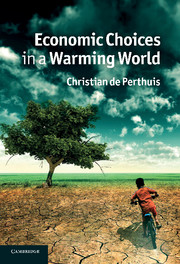Book contents
- Frontmatter
- Contents
- Acknowledgements
- Introduction
- 1 Climate risk
- 2 Some like it hot: adaptation to climate change
- 3 Building a low-carbon energy future
- 4 Pricing carbon: the economics of cap-and-trade
- 5 Intensifying agriculture to safeguard forests
- 6 The price of carbon: the economics of projects
- 7 Macroeconomic impacts: sharing carbon rent
- 8 International climate negotiations
- Conclusion
- References
- Appendix 1 Thirty key readings
- Appendix 2 Thirty key sets of figures
- Appendix 3 Greenhouse gas emissions around the world
- Glossary
- Index
Appendix 3 - Greenhouse gas emissions around the world
Published online by Cambridge University Press: 05 June 2012
- Frontmatter
- Contents
- Acknowledgements
- Introduction
- 1 Climate risk
- 2 Some like it hot: adaptation to climate change
- 3 Building a low-carbon energy future
- 4 Pricing carbon: the economics of cap-and-trade
- 5 Intensifying agriculture to safeguard forests
- 6 The price of carbon: the economics of projects
- 7 Macroeconomic impacts: sharing carbon rent
- 8 International climate negotiations
- Conclusion
- References
- Appendix 1 Thirty key readings
- Appendix 2 Thirty key sets of figures
- Appendix 3 Greenhouse gas emissions around the world
- Glossary
- Index
Summary
Sources used
The emissions data used for the table come from the Climate Analysis Indicators Tools (CAIT) program developed by the World Resources Institute (WRI). This application combines information taken from various databases, with the emphasis on sources based on scientific studies.
The CAIT database does not provide complete information about emissions related to forests or land use change. When such information was not complete we supplemented it with the information sent by countries to the United Nations Framework Convention on Climate Change (UNFCCC) secretariat, when this was available.
The breakdown among countries by income level is the one used by the World Bank in the 2010 report on world development on the basis of per capita income thresholds from $975 to $11,905 at 2008 exchange rates.
Guide to reading the table
The first column gives the total anthropogenic greenhouse gas emissions, including forests, for the seventeen largest emitters, with the twenty-seven-member European Union being considered as a single emitter, plus France.
Energy-related carbon dioxide (CO2) emissions cover all CO2 emitted during the production and use of energy: the production of heat and electricity, the consumption of energy derived from fossil fuels in industry, buildings and transport, fugitive emissions and all other energy uses. Emissions resulting from international air and maritime transport are included. To obtain the total energy emissions considered in Chapters 3 and 4, add in fugitive methane emissions from coal mines and oil and natural gas installations.
- Type
- Chapter
- Information
- Economic Choices in a Warming World , pp. 237 - 242Publisher: Cambridge University PressPrint publication year: 2011



